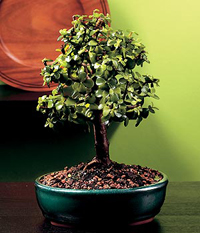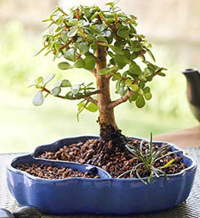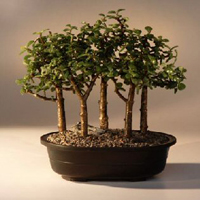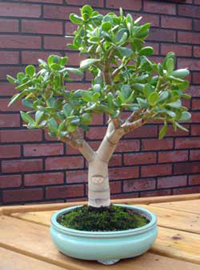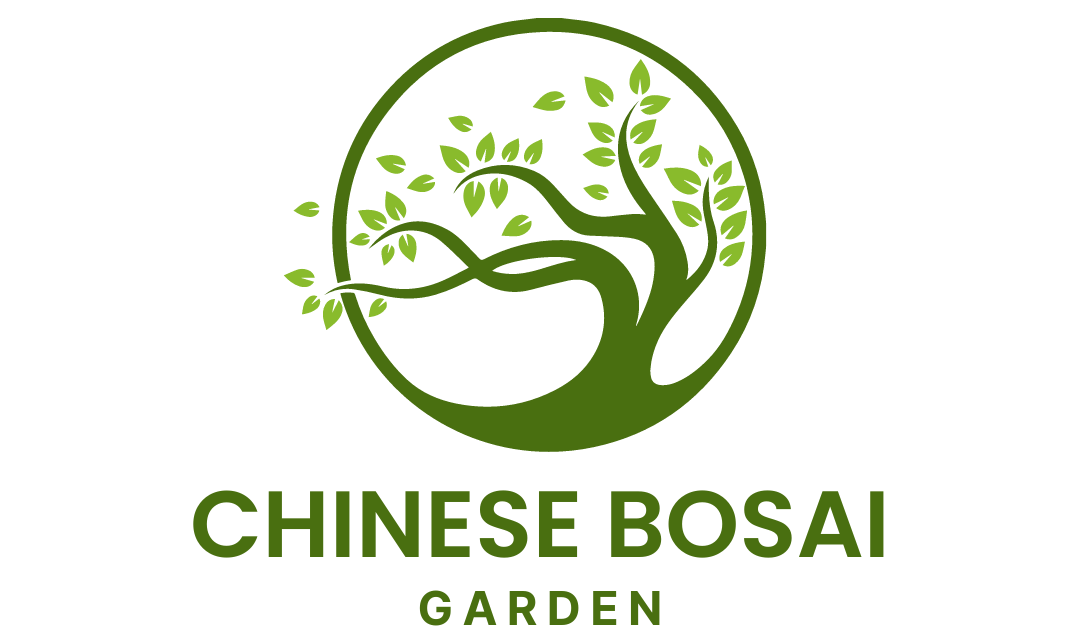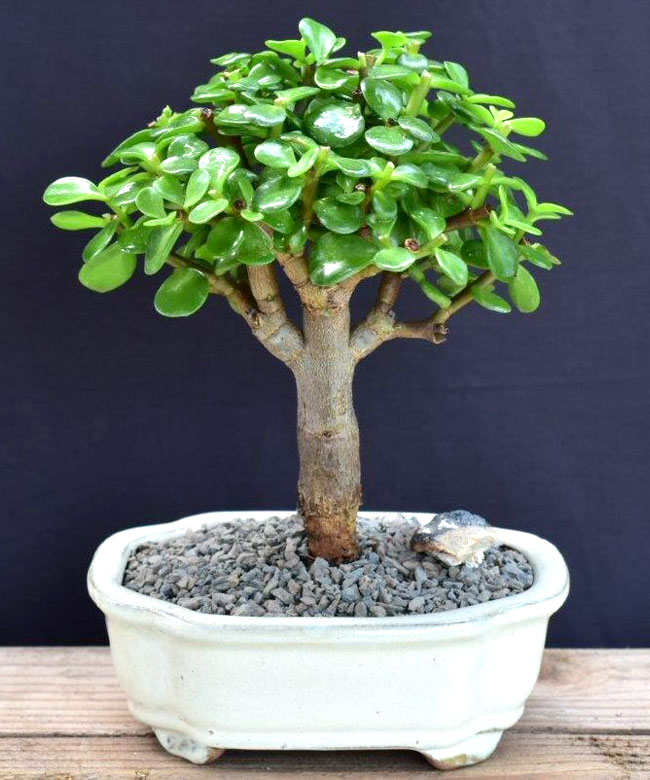
The Jade Bonsai Tree, botanical name Portulacaria afra, is one of the most popular bonsai trees. Because it is very adaptive to different environments, drought tolerant, and easy to style, it is considered to be the best plant for beginners.
Advanced bonsai enthusiasts also like it because it’s very easy to style.
In the natural environment can reach a height of 2 meters or more. However, if grown as a bonsai tree in a small container, it grows only to about 7 inches.
This evergreen is native to Southern Africa where it is often consumed by elephants, hence the common names Elephant’s Food, Elephant Bush, Elephant Grass, and Elephant-Plant. It has a thick trunk topped with dense elliptic leaves.
Additional Information
Botanical name: Portulacaria afra
Family: Portulacaceae
Common Names: Dwarf Jade Bonsai Tree, Dwarf Jade Bonsai, Jade Bonsai, Elephant Bush, Elephant Food, Elephant Plant, Miniature Jade, Dwarf Jade, Spekboom, Small Leaf Jade.
Origin: Southern Africa
Appearance: Jade Bonsai Tree is an evergreen. It has a thick fleshy trunk that is covered by leaf scars. When young, the bark is green, turning red-brown as it gets older. It has simple pale green round leaves that are supported by reddish-colored stems.
Flowering: During fall months Jade Bonsai Tree produces small clusters of beautiful star-shaped white flowers. To encourage the bloom, place your bonsai in an area with a lot of natural sunlight.
Outdoor/Indoor Use: Both. If grown outdoors, it needs to be protected from cold temperatures below 40 degrees.
Light Requirements: It prefers full sun and can be grown outdoors or indoors if provided with enough light.
Water Requirements: Since it is a tropical plant, it likes to be misted. Of course, misting doesn’t replace watering. Water it regularly, making sure the soil has good drainage.
One interesting thing about the Jade bonsai tree is that it naturally stores and holds water in the leaves, making it easy to overwater. Giving the soil time to dry between watering will promote stronger root growth and help eliminate top-heavy foliage.
Pruning/Training: The Jade Bonsai Tree needs to be pinched often during the growing season. Once or twice a week, depending on how fast your bonsai is growing.
In order to train the branches to grow horizontally you need to use a wire starting from the top and going all the way to the end of the branch.
When you get to the end, twist the last set of leaves 90 degrees. It can tolerate drastic pruning. Jade Bonsai leaves usually grow up to two inches but you can train them to stay around 1/2 inch through regular pruning.
Bonsai Style: While Jade Bonsai Tree can be adapted to almost any bonsai style, the clump, cascade, or informal upright are my favorites.
Fertilizing: Use balanced fertilizer for vigorous growth.
Repotting: The Jade Bonsai Tree should be repotted every two to three years, during spring. You don’t need to use special soil mixes, just make sure it has good drainage. For the best result, use inorganic compost.
Hardiness: Jade Bonsai Tree does best in USDA Zone 10a – 11. It can tolerate a variety of growing conditions but needs to be protected from cold temperatures below 50 degrees. Like all tropical plants, it prefers warm and humid climates.
Insects and Diseases: Mealy bugs, root rot, aphids, spider mites, scale, and root aphids. Outdoor Jade Bonsai Trees are especially susceptible to aphids.
Propagation: By stem or leaf cuttings. You can cut a leaf and place it in the water. After about 2 weeks it will grow roots and can be planted into soil.
